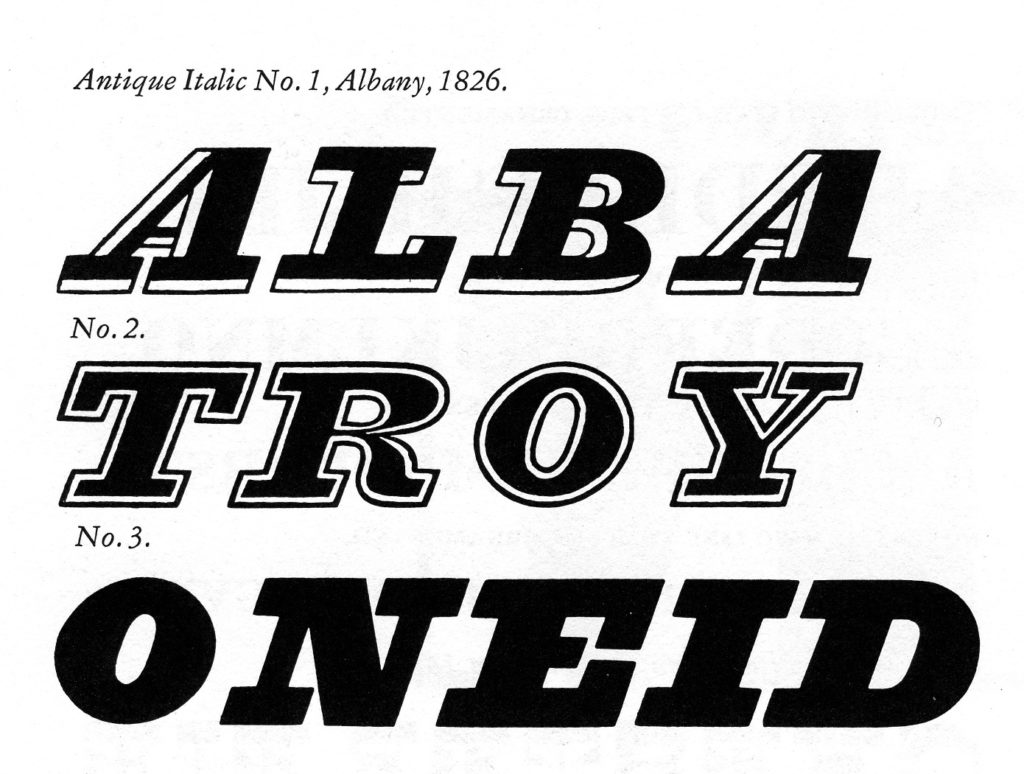
All Over Albany had a post yesterday about what an Albany typeface might look like. These days just about anyone with a computer can try his or her hand at designing a typeface, but for centuries it was a highly specialized craft. Individual characters had to be cut into matrices from which metal type could be cast, or adapted to a pantograph from which wooden letters, often used for larger type, could be routed. As an early center of printing in the United States, Albany was also an early center of typography.
In 1826, Richard Starr of Albany Type Foundry issued the largest selection of display types yet seen in the United States (according to Kelly’s “American Wood Type: 1828-1900”). Shown here are a few samples that would have been in that early catalog. Starr’s selection included Romans in Open, Double and Meridian Shade, in sizes up to 16 points. Outlined Antique and Italic, and Tooled Antique and Italic were available up to 5-line (display) sizes. A 14 line Roman was the largest in the book.
Richard Starr was one of five brothers who worked in type in various cities in the U.S.; his brother Edwin is said to have been the first person in the country to regularly engage in punch-cutting (the creation of a typeface for reproduction) as an occupation. As early entrants to this craft, their type-making ventures frequently went out of business, and they would move on to another town. In 1824, Richard Starr set up in Albany with Obadiah Van Benthuysen, who was the first printer in the country to use steam engines to drive his machines. The letter announcing the specimen book of the Albany Type Foundry claimed that “one of this concern has been engaged in letter-cutting for more than fifteen years, and that he has cut more than one-half of all the letter now cast by all the American Founders.” They offered nonpareil (six point type) at one dollar and twenty cents a pound, brevier (about eight point) at seventy cents a pound, and other sizes at proportionate rates. Van Benthuysen exited the foundry, and the firm carried on as Starr, Little & Co. It was located at 8 Liberty Street. The partners split by 1833, and Starr appears to have moved on to New York City by 1840; Little ran a type foundry for a few years longer. Various men who had worked for them set up type foundries across the state.
The typefaces shown here, while certainly not designed to reflect the capital city, were cut and produced here, and can be seen in any number of publications put out by Van Benthuysen, who in addition to a brisk book and broadsheet-publishing business put out various incarnations of the Albany Argus.
In 2001 a David Peat reproduced the entire catalog of a later Albany operation, the Franklin Letter Foundry of A.W. Kinsley, which I’d love to get my hands on.


Leave a Reply